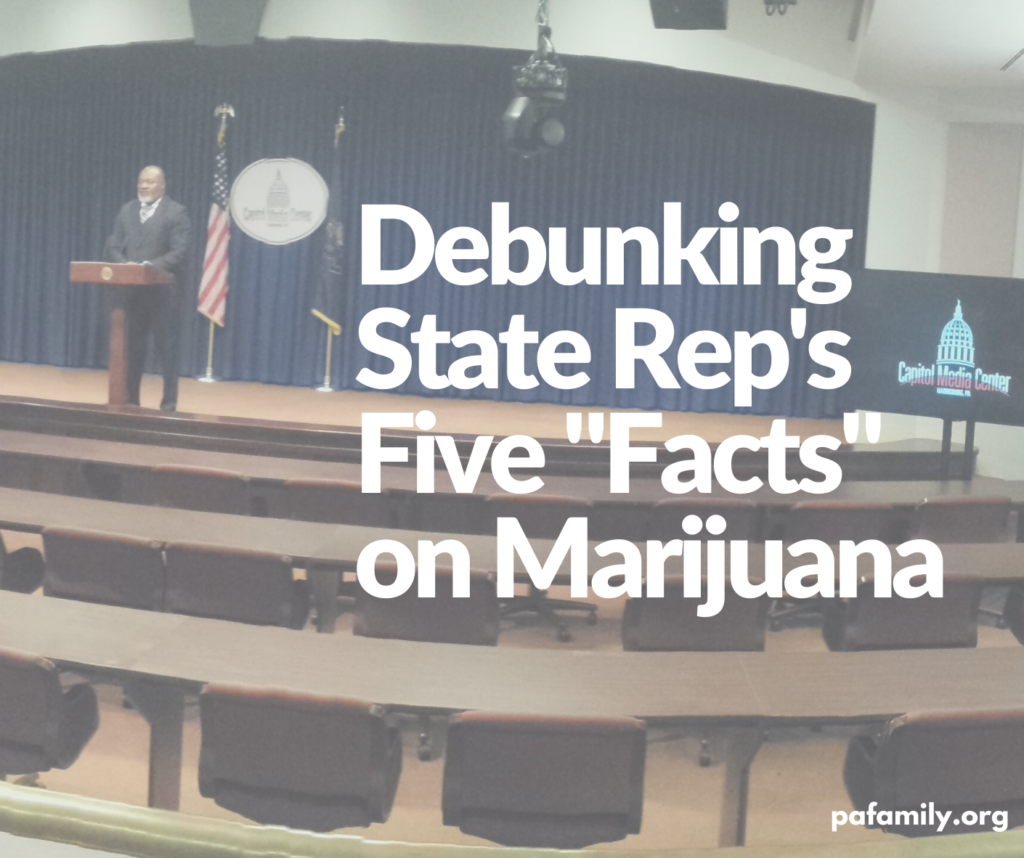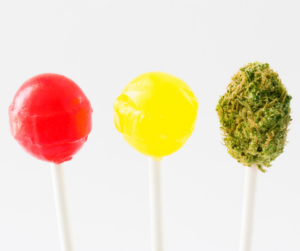In the midst of the COVID-19 crisis, State Senator Sharif Street (D-Philadelphia) took time today to hold a virtual press conference to tout legislation to legalize recreational marijuana; joined online by other elected officials like State Representative Jake Wheatley (D-Pittsburgh).
Rep. Wheatley held a press conference earlier in the year to introduce his legislation, where he released a newsletter with “a section dedicated to debunking the misinformation being proliferated by House Republican Leadership.”
Let’s take a look at this “Fact or Fiction” list from Rep. Wheatley:
Wheatley’s Claim #1: “In states where cannabis is fully legal, teens are no more likely to use cannabis.”
Luke Niforatos (Chief of Staff, Smart Approaches to Marijuana and Colorado native) was a recent featured guest on a webinar where he briefly highlights what’s happened in Colorado with teens and marijuana.
“We are seeing a dramatic increase in cannabis use disorder (the medical term for marijuana addiction). One in five for youth now [who started using marijuana more than three years ago diagnosed with cannabis use disorder in the past twelve months]. It was one in 10 ten years ago.” – Luke Niforatos (Source: National Survey on Drug Use and Health)
For the full webinar with Luke Niforatos, go to pafamily.org/marijuana
Wheatley’s Claim #2: The statement ‘cannabis is addictive’ is “not based on or rooted in any scientific finding.”
If you don’t agree that cannabis can be addictive, you’re just not following the science.
- Substance Abuse and Mental Health Services Administration (SAMHSA)
- “People can and do become addicted to marijuana.”
- “Approximately 1 in 10 people who use marijuana will become addicted. When they start before age 18, the rate of addiction rises to 1 in 6.”
- National Institute on Drug Abuse (NIDA)
- “Marijuana use can lead to the development of problem use, known as a marijuana use disorder, which takes the form of addiction in severe cases.”
- “Recent data suggest that 30 percent of those who use marijuana may have some degree of marijuana use disorder.” (Source: JAMA Psychiatry)
- “People who begin using marijuana before the age of 18 are four to seven times more likely to develop a marijuana use disorder than adults.” (Source: Drug Alcohol Depend)
- Center for Disease Control (CDC)
- “Yes, about 1 in 10 marijuana users will become addicted. For people who begin using younger than 18, that number rises to 1 in 6.”
- American Addiction Centers
- “Marijuana is an addictive drug.”
Wheatley’s Claim #3: Responding to the claim of employers having no way of knowing if their employees are high: “To suggest employees aren’t already making the responsible choice not to come to work high, but just because cannabis would be safer and legally purchased means they suddenly would make irresponsible choices is insulting.”
Whether employees are responsible or not isn’t the question. What we have understand is as marijuana use has increased in states that have legalized its recreational use, so has use by employees, both on and off the job. Businesses in these states have had to hire out-of-state residents in order to find workers that can pass a drug test.
“Johnson said his company [GE Johnson, the largest construction company in Colorado] has encountered so many job-candidates who have failed pre-employment drug tests because of their THC use that it is actively recruiting construction workers from other states.” (Drug use a problem for employers, The Gazette)
Wheatley’s Claim #4: Legal cannabis leading individuals to use harder drugs has been “thoroughly debunked.”
Most people who use marijuana don’t go on to use other drugs but most people who use other drugs start with marijuana.
Here’s just one example of how serious the issue of marijuana use and its potential link to more illicit drugs, from the Caron Treatment Center (with offices here in Pennsylvania):
- “92 percent of teens seeking treatment at Caron list marijuana as a drug of choice, and 98 percent of those patients use it in conjunction with other drugs.”
- Half of opiate/heroin addicted adolescent patients treated at Caron started their drug use with marijuana.
See The Hard Facts on Marijuana by Kate Appleman (Caron Treatment Center).
“Some research suggests that marijuana use is likely to precede use of other licit and illicit substances and the development of addiction to other substances.” (National Institute on Drug Abuse)
Wheatley’s Claim #5: “If we are being honest, we know that cannabis is as close to harmless as it gets.”
In 2017, the National Academies of Sciences, Engineering and Medicine – considered to be the gold standard for scientific research and medical practice in the United States – released a comprehensive report on existing evidence regarding the health effects of using marijuana. They ended up considering over 10,000 sources and arrived at nearly 100 conclusions, including:
- Respiratory problems,
- Mental health issues
- Increased risk of car accidents
- Progression to and dependence on tobacco, alcohol and other drugs
- Learning, memory, and attention loss
- Low birth weight
- Increased risks of suicide, depression and social anxiety disorder
Marijuana can cause significant harms. Here’s just a few additional examples:
- 1 in 5 traffic deaths in Washington State are marijuana-related. (Source: AAA)
- Smoking one joint impacts your lungs at the equivalent of smoking five cigarettes. (Source: British Lung Foundation)
- Legalized states seeing increase in pediatric calls to poison control for children ingesting marijuana edibles. (Example: Michigan Poison Center)
Those are the facts. And they should lead every elected official to question bringing marijuana to Pennsylvania.
Today’s marijuana is much more potent than in the past – with pot edibles, candies, cookies, ice creams, and waxes being up to 99% THC (the ingredient in marijuana that causes users to get high. The legalization of recreational marijuana is a license for Big Tobacco to commercialize the sale of these highly-potent products and creates a host of negative consequences.






